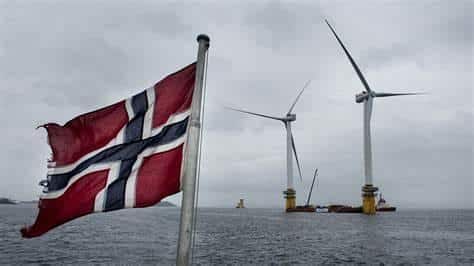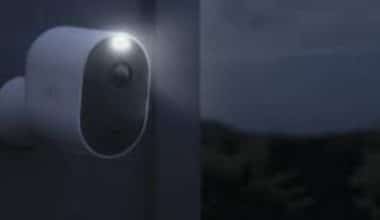Even do we all rely on electricity daily to make our lives more comfortable, quite a lot of us don’t understand the concept and don’t know how it all works. We know that we need to have electricity to keep our homes warm and comfortable, as well as that most of our daily functioning depends on a continuous and stable power supply. But, we don’t really think too much about the concept behind it all, about the power supply in general, and about the principles that can dictate the prices of it on the Norwegian market.
It is no wonder, therefore, that we often find ourselves surprised at the electricity bills that come our way, wondering how they may be so high one month, when they were fairly lower the previous one, for example. Not understanding the principle behind all of this is bound to lead to surprises and confusion. So, what you have to do is learn a bit more about the actual concept of electricity, as that’s how you’ll get a clearer understanding of the bill, as well as figure out what it is that a price increase is actually telling us.
Here are the bills explained a bit further: https://www.lifeinnorway.net/electricity-bills-in-norway/
If you’re tired of living in the dark (not literally, of course, since you do have a stable power supply), then you are most probably ready to learn a bit more about the actual concept of electricity. You want to know what it is, as well as what the power balance entails, in case you’ve heard it being mentioned in the context of your bills and electricity a few time. Furthermore, you want to get a better idea about the actual power supply in Norway, and finally find out what the price increases can tell us.
Is that true? Are you ready to learn? If yes, then you will find the answers to those important questions you have below. By getting the answers, you will definitely understand everything much more clearly, which will lead to you not being surprised with the bill the next time it comes, since you’ll know exactly what it is that affected it in one way or another. So, without any more ado, let us start answering those questions and helping you learn what you need to know.

What Is Electricity?
We are, as it is perfectly logical, going to begin with the very basics here. After all, there is no point in going into details if you don’t even know what electricity actually is. Hva er elektrisk strøm specifically? Time to find out. We will have to get a bit technical, explaining what electricity consists of, but I will try and keep the explanations as simple as possible, so that you everyone can clearly understand the important concepts.
Let’s begin right away. Electricity itself consists of protons, electrons and neutrons, particles that are positively charged, negatively charged and uncharged, respectively. Different charges attract each other, and current comes into existence when electrons move from one field to another. You may understand this more clearly when you get reminded that electrical voltages have two poles, one that is positively charged, and the other one that is negatively charged, both denoted with a plus and a minus sign, such as those you’ll see on batteries, for example. Voltage flows between the plus and the minus signs, thus creating current.
To get the electrical voltage, you will need a power source, of course. So, connecting an electrical conductor to a voltage source, you basically get electricity. And, as it is perfectly logical already, the greater the electrical voltage in a circuit, the stronger the current will be. As you can see, the concept is not that difficult to understand, even though most of us have gone a long, long time without ever wondering how it all works. Now you know.
One more thing to know, though, is that there is the direct and the alternating current that we distinguish between. The alternating one changes directions regularly, while the same amount of current actually flows in both of those directions in a conductor. The direct current, obviously, flows only in one direction, and turning the alternating one into the direct one is possible.
The energy supply in Norway, as well as in the rest of the world for that matter, is nowadays based on the alternating current. This is because there are major advantages of it, in terms of the production, as well as in terms of the transmission in the distribution network. The today’s power grids send alternating current quite long distances, allowing you, thus, to easily have electricity at home.
What Is the Power Balance?
Electricity is produced, and then it is consumed. The relationship between the production and the consumption is called a power balance. Now that you have received your answer to the question of hva er elektrisk strøm, you are probably eager to learn more about the power balance in Norway and understand it all much better. So, as explained, we’re talking about the relationship between the power produced and the power consumed.
The power balance is not the same every year, of course. In fact, there tend to be some great fluctuations from time to time. As it is perfectly logical, consumption increases during those cold winter months, and then decreases in the spring and in the summer. While supply reliability is great in Norway, meaning that there are very few power outages, and even when they do occur, they don’t last for a long time, that doesn’t automatically mean that the production is higher than consumption.
How come? Well, there is a simple explanation. Norway is, in some cases, not self-sufficient when it comes to power supply, which means that it sometimes imports electricity from other countries, aiming at making sure that there is a steady power supply and that people in Norway don’t have to suffer from outages. It is estimated that, in the beginning of 2023, around 35% of Norway’s electricity consumption was actually covered by imports.
Import usually happens during winter, when Norway has trouble producing enough electricity, and importing it prevents shortages. If shortages did happen, the prices would go through the roof, and, in extreme cases, there would be energy rationing. In other words, measures would be taken to force energy conservation. Nobody wants this to happen.
Norway is, however, self-sufficient most of the times, even though import is necessary at one point or another. On the other hand, the country sometimes has a surplus of energy, in which case it exports it. As you can see, this is a constant game aimed at achieving the right power balance. The consumption is suspected to increase in further years, though, which raises the question of whether the country will become a big importer of electricity.
Norway’s Power Supply Explained
Wondering why importing is sometimes necessary? That has to do, among other things, with the way the country produces electricity in the first place. Hydropower is what Norway relies on the most, but there is also some wind power that it gets from windmills. In any case, around 90% of power supply in this country consists of hydropower.
This automatically means one thing. So as to be able to produce enough energy, Norway relies on rainfall. Thus, low rainfall can cause lower production, which can, in turn, lead the country to rely more on import. Some things depend on the nature, then, as you can see, but the good thing is that the country has the option of storing the energy, meaning that large parts of the production capacity are actually adjustable.
It is also worth mentioning that shortages in other countries close to Norway can affect it as well, due to relying on import to some extent. If something like that happens, the result will be higher prices. Finally, as on every other market, it is the supply and the demand that play the biggest role in how everything will pan out and what the prices will look like.
What Do Price Increases Tell Us?
The above must have given you some ideas as to what it is that those price increases tell us. Following the basic market principles, that is, the principles of supply and demand, you may be able to figure out all on your own what the price increases actually mean. In any case, let me clearly explain that, and thus help you understand your bills and not get surprised with the fluctuations you may be seeing on them.
In the simplest words possible, higher prices tell us that there is an imbalance between the supply and the demand. To be more precise, demand is getting higher, while supply is shrinking, hence the need for increasing the prices. The path towards decreasing them consists of the electricity producers increasing production, as well as consumers decreasing consumption. Sounds simple in theory, but it is often a bit more difficult in practice.






